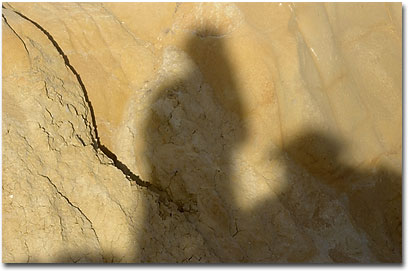|
|
 The Digital Corner You Press the Button, We Do the Rest (Kodak, 1888)  "Self Portrait" Text and Photography Copyright Uwe Steinmeuller All rights reserved. Reading the book "On Photography" by Susan Sontag reminded me of this old Kodak slogan, one that still holds true for most photographs taken today. But for many photographers like me, "the rest" is as important as taking the picture in the first place. It is true that all the steps after exposing the film or storing the CCD image involve more craftsmanship than does the artistic moment of framing and properly exposing the image. I also agree with Ellen Rudolph's recent essay "Garbage in, Garbage out" but there is also the experience that your lab can end up ruining your best image, resulting in "Fine Art in, Garbage out." There are in principle two solutions to this dilemma:
In both cases you pay the price. Either you pay a premium for the service of experts or you pay with your own hard labor. There is also the side of high investment into the equipment necessary to produce quality work. While this investment is quite reasonable for B&W photography, it can be very expensive for fine art color work. After many years of working with B&W in the chemical darkroom, I was able to produce good print quality. Even my Cibachrome prints were not that bad but I never managed to get really consistent color from print to print. Working with the chemistry was also more than just hard work - these chemicals were pure poison. For many commercial photographers today there is still a separation between taking the picture (their job) and preparing the prints (the task of highly specialized labs). Just a few years ago it was out of the reach of even well-regarded photographers to own and operate the equipment necessary for high quality scans and prints. How does digital photography change the game? There are many aspects involved here:
It does not really matter whether you take the photos with a quality digital camera or by using good scanners. Both ways have their pros and cons. My choice of using digital SLRs is related to the faster process, the instant control about the result and a lot of adventure. Film might still have the edge in ultimate resolution for 35mm but image resolution is not everything for my photographic work. As a result of this digital evolution I have all the control I want and all at home in my small office. What are still the limits?
Here is my advice: try to understand all the aspects of digital photography and it's implications for your time and investment. Also understand that the camera might be the least important part for taking great photographs, although the discussion of cameras takes 95% of all public newsgroup discussions. The most important instrument is still your eye: otherwise "Garbage in, Garbage out" is definitely the result. US-NPN 109 Comments on this column? Send them to the editor. |
|
|